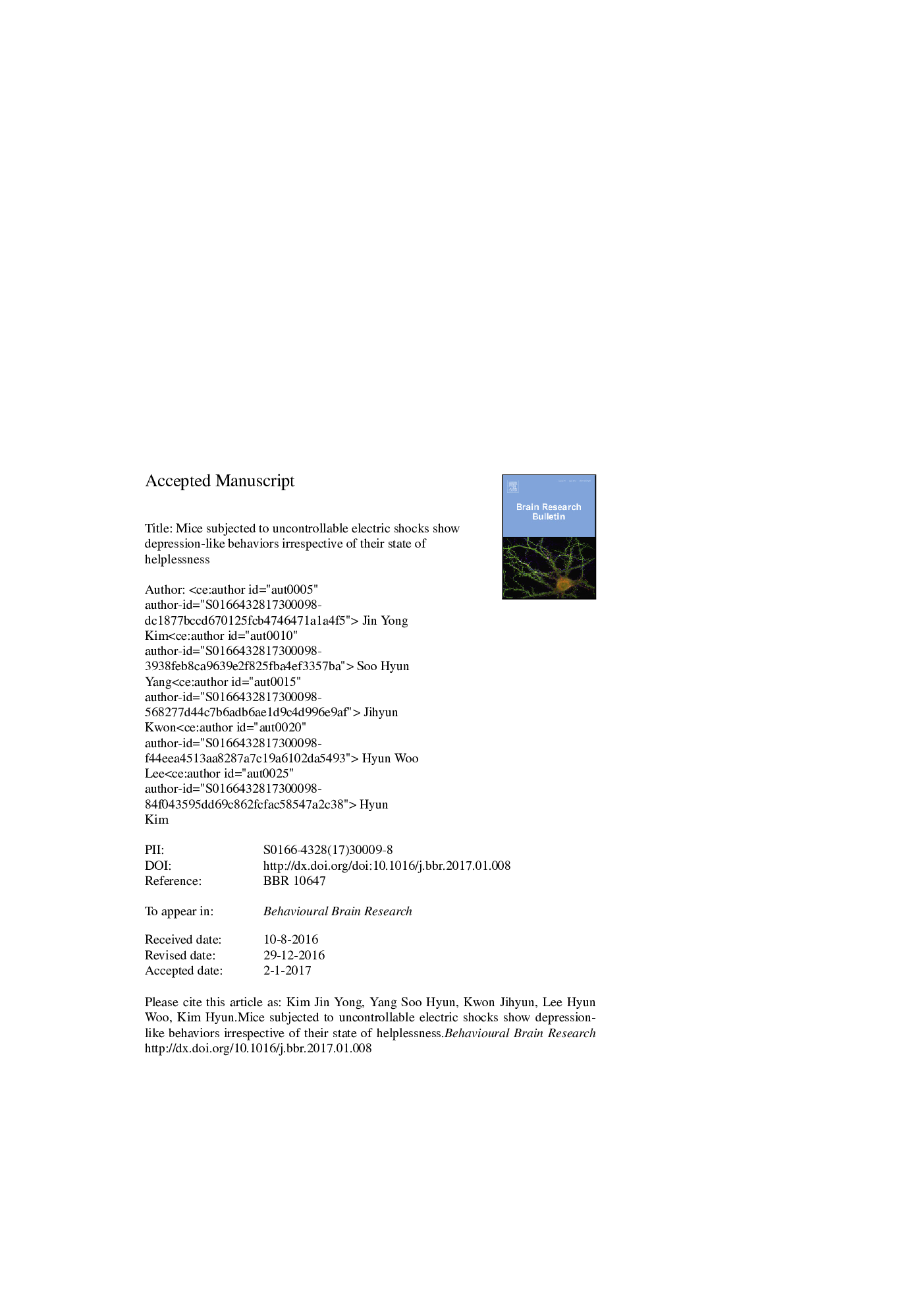| Article ID | Journal | Published Year | Pages | File Type |
|---|---|---|---|---|
| 5735523 | Behavioural Brain Research | 2017 | 32 Pages |
Abstract
The unpredictable and inescapable electric shock-induced “learned helplessness” paradigm has long been used to produce an animal model of depression to identify the molecules associated with depressive symptoms or to assess the efficacy of pharmacological treatments for depression. After exposure to unpredictable and inescapable shocks (uncontrollable stress), most of mice showed defect in escape behavior in active avoidance test (learned helplessness, LH), while others did not (non-learned helplessness, NLH). Here, we investigated whether mice with LH or NLH exhibited depressive symptoms, including anhedonia, anxiety, and despair. We found that compared with control naïve mice, both uncontrollable shocks-induced LH and NLH mice showed increased anhedonia- and anxiety- but not despair-like behaviors. Notably, mice subjected to uncontrollable shocks showed similar behaviors, irrespective of whether they also showed LH or NLH. Furthermore, since both LH and NLH mice showed only anhedonia- and anxiety- but not despair-like behaviors, this model may be generally inadequate for classic depression-like behavior assessment. In conclusion, uncontrollable electric shock induces depression-like behavior, irrespective of the state of helplessness.
Keywords
Related Topics
Life Sciences
Neuroscience
Behavioral Neuroscience
Authors
Jin Yong Kim, Soo Hyun Yang, Jihyun Kwon, Hyun Woo Lee, Hyun Kim,
